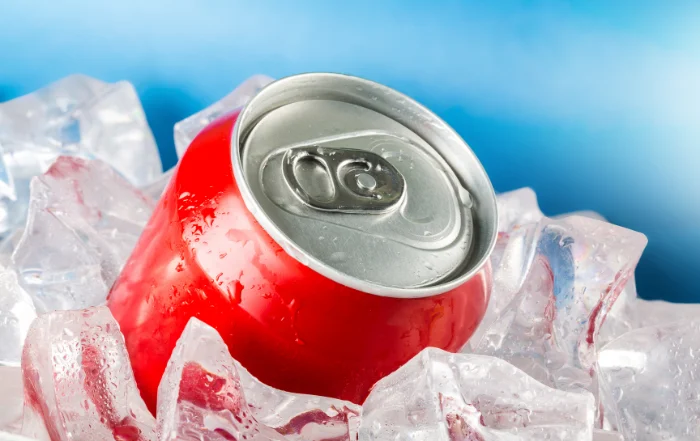Alright folks, buckle up because we’re diving into the shady, murky, super sweet, highly profitable and often greenwashed world of beverages! We’ve got sodas, bottled water, and a lot more to talk about.
So, let’s kick things off with some mind-blowing facts.
Brace yourselves: the global soft drink industry is worth a whopping $0.85 trillion (that’s $850 Billion Dollars or more than the GDP of 193 out of 213 countries), and it’s projected to keep growing at a rate of around four percent each year.
Now, when it comes to chugging down those sugary drinks, the United States takes the crown.
One out of every five Americans guzzles a soda every single day. Can you believe it?
And get this, the average person is expected to chug down a mind-boggling 42.9 liters of soft drinks in 2023. That’s a lot of fizz!
Now, let’s talk big players…
When it comes to annual revenue, PepsiCo struts its stuff, raking in a whopping $86 billion. But half of that moolah actually comes from their snack companies. Yep, they’re not just all about Pepsi. They own a bunch of other munchies like Cheetos, Captain Crunch, and Mountain Dew. It’s like a snacking empire full of palm oil and a myriad of not-particularly-natural ingredients.
PepsiCo Portfolio of Beverage Brands
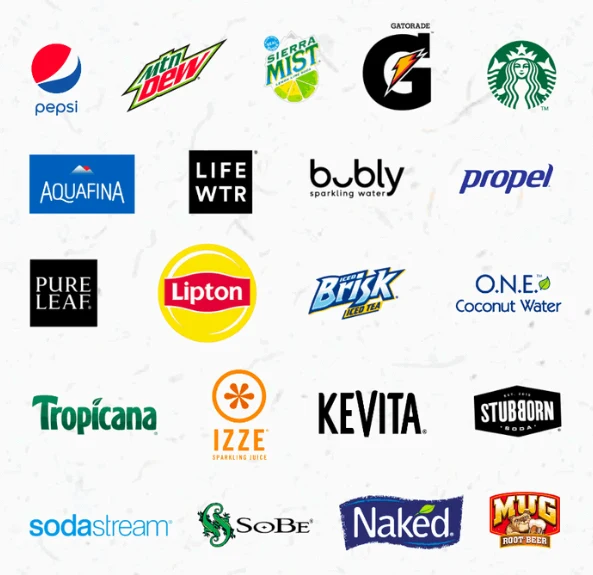
Coca-Cola, on the other hand, dances its way into the second spot with an annual revenue of $43 billion. They’ve got their own party of brands, including Fanta, Vitamin Water, and even Innocent Smoothies (that’s the brand name, they figure with that name you won’t pay attention to the nutrition label!).
Coming in at number three, we have Dr Pepper, making a cool $14 billion. And guess what? They’ve got their own entourage too. From Canada Dry to Hawaiian Punch, they know how to keep things fizzy and flavorful and full of preservatives, additives, and dyes.
Oh, and let’s not forget about Red Bull, the energy drink that gives you wings, has an annual revenue of $8 billion.
Last but not least, we have Monster Energy, raking in around $6 billion. They’ve got their claws in a few other companies too, but let’s just say they’re more into sports events and teams than the average beverage or food shenanigans.
So, that wraps up our tour of the top dogs in the non-alcoholic beverage world.
Now, let’s take a refreshing sip of the honest impact these carbonated concoctions have on our planet.
Packaging Run Amok: Glass, Aluminum, Plastic - Are Those My Only Options?
We’ve got to break it down into different aspects.
First up, packaging. Believe it or not, a whopping 60 to 77% of the environmental impact of soft drinks comes from the packaging itself.
It’s like a soda-powered environmental disaster!
Ingredients account for 7 to 14%, manufacturing adds another 7 to 10%, and transportation kicks in with 7%. And hold your fizz, there’s an additional potential impact of 33 percent when it comes to refrigeration. Who knew those chilly drinks had such a chilling effect on the environment?
But let’s focus on the packaging for now.
Glass, oh glorious glass, has the highest manufacturing impact. It’s heavy and requires a lot of material and super high temperatures to produce. Plus, the excavation of minerals for glassmaking takes a toll on our natural environments.
So, using glass as a single-use product is like drinking from a landfill. Not cool, folks.
But here’s a secret: reusing glass reduces its impact over time.
On the other end of the spectrum, we have PET plastic bottles.
These lightweight wonders actually have the lowest production emissions. Less material, less impact. It’s as simple as that.
And here’s a staggering stat for you: if we could bump up the recycling rate of PET bottles to 40 to 60%, we could reduce the global warming potential of soft drinks by a whopping 32 to 48%. Now that’s what I call a refreshing change!
What about those trusty aluminum cans? Well, they can be recycled too, and unlike glass, they’re lightweight and flexible. This means less risk of damage during transportation and less impact overall.
The recycling rate for aluminum isn’t too shabby, but there’s always room for improvement.
Plus, according to the aluminum association, a whopping 75% of the aluminum ever produced is still in use today. It’s like aluminum’s got a never-ending party going on!
But let’s not forget, the initial production impact of both glass and aluminum is pretty high.
It takes a lot of material and a whole lotta heat to get those shiny containers ready.
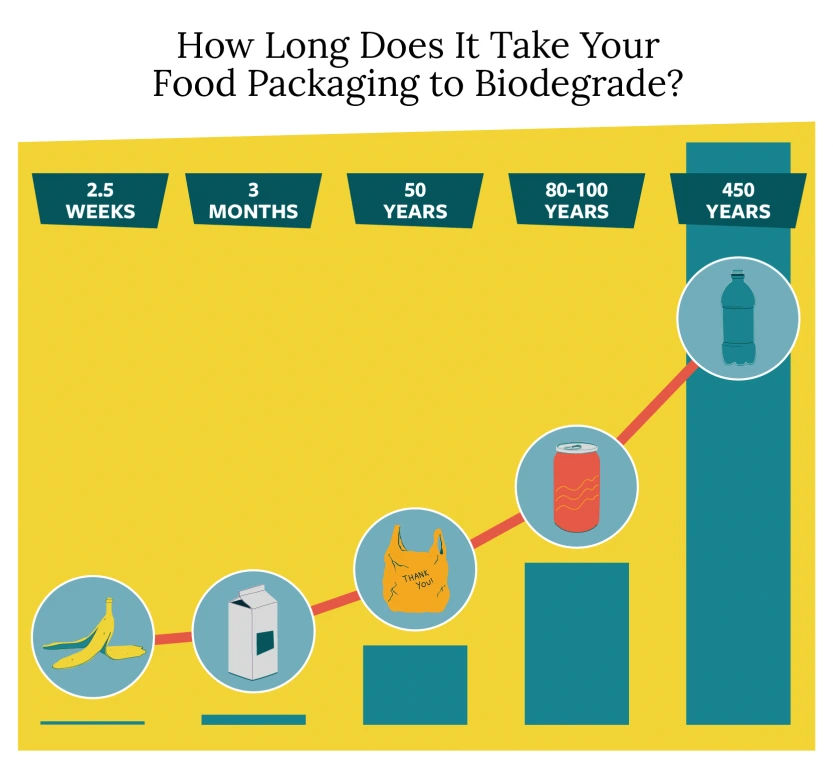
However, when it comes to recycling, aluminum only emits around 8% of the greenhouse gases compared to producing it from scratch. It’s like giving aluminum a second chance to shine!
Now, hold your applause because we don’t need to put glass on a pedestal here. Just because something is packaged in glass instead of plastic doesn’t automatically make it more sustainable.
Glass has its own set of challenges, especially when it’s used as a single-use product.
And let’s not forget, if there’s no proper recycling infrastructure in place, we’ve got a problem. But fear not, some countries are doing it right.
Take Denmark, for example. They’ve got a return system where glass bottles for soft drinks and beer are washed and reused a whopping 30 times before they’re even remelted. Talk about a sustainable glass party!
And what about plastic, exactly?
Surprisingly, it’s not all doom and gloom. Plastic has its upsides too. It’s lightweight, cheap, and requires fewer materials. There are smart ways to use plastic that make sense.
But here’s my biggest gripe: many companies that produce plastic packaging love to brag about how low impact and low emission it is during production. They preach about recycling and put the burden on consumers to do their part.
But guess what?
These companies are raking in billions without meaningfully contributing to the establishment of widespread recycling systems. Recycling is not a one-size-fits-all system. It varies from region to region, city to city, country to country.
There’s no universal solution. These companies need to step up and invest in creating accessible and efficient recycling infrastructures. It’s about time they put their money where their plastic is!
But hold on tight because there’s more to the plastic puzzle. After the initial production, we face a myriad of issues.
Plastic pollution is suffocating our oceans and nature.
Microplastics are infiltrating every nook and cranny. And let’s not forget, plastic is a fossil material. It’s a byproduct of fossil fuel production, which, surprise surprise, contributes to climate change. We’re in a bit of a pickle, aren’t we?
Now, let’s talk transparency. Choosing the right packaging can be as confusing as figuring out which way to twist off a stubborn bottle cap. There are so many variables to consider, it’s enough to make your head spin.
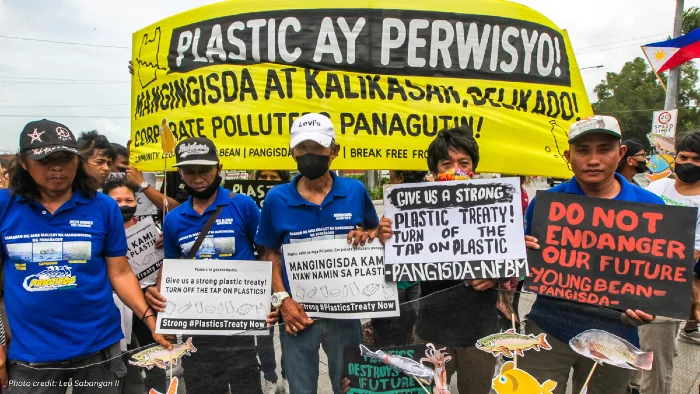
Sugar: Soda Companies Love The Stuff, America Is In Love With It & The Earth Is Giving It The Side Eye
Alright, let’s shift gears and dive into the world of ingredients. Brace yourselves, because we’re about to unravel the secrets of sugar.
When it comes to soft drinks, sugar takes the crown as the most impactful ingredient.
Although it accounts for less than 20% of the overall impact, we can’t ignore its role. So, let’s get super honest about sugar’s dark side.
The agricultural process of growing sugar comes with its fair share of baggage. Pesticides, chemical fertilizers, and a whole lot of water are part of the deal. Whether it’s cane sugar or other sweeteners, the impact is significant.
Producing one liter of soft drink requires a whopping 340 to 620 liters of water, depending on the sugar source. That’s a whole lot of H2O!
But here’s where things take a social twist. A large quantity of sugar is imported from countries with low wages and a higher risk of forced child labor.
It’s the same story we’ve seen in the chocolate industry.
It’s like a global exploitation party, and it’s high time we put an end to it.
Now, let’s address the burning question: Is diet soda more sustainable because it doesn’t contain sugar?
Well, it’s a bit of a mixed bag. Artificial sweeteners like aspartame, saccharin, and acesulfame-K are the stars of the show. They don’t grow out of the earth; they’re created in industrial laboratories.
These sneaky sweeteners can be up to 600 times sweeter than sugar but contain zero calories.
Now, hold your horses. Zero calories doesn’t mean it’s a magical elixir of health. Calorie-free just means your body can’t digest or absorb it, so it takes a one-way trip through your system. It’s like a joyride with no destination.
And guess where it ends up?
In our waterways and eventually our environment. It’s a whole new chapter in the sweetener saga, and science is still catching up. We’ve found artificial sweeteners in groundwater, and they’ve been linked to changes in algae and fish. It’s like a sugar-free science experiment gone wrong!
Carbon Footprints: Whose Footprints Are In The Sand Now?
But let’s talk carbon footprints for a moment. It seems that diet soda has a moderately lower carbon footprint during the production stages compared to sugary drinks. But here’s the catch: that’s only during production.
We need to consider the bigger picture.
And here’s an important note: comparing the impacts of different types of sweeteners, both natural and artificial, is like trying to untangle a bunch of knotted drinking straws. Their supply chains are vastly different, making it challenging to compare apples to oranges—or in this case, artificial sweeteners to sugar.
And now, a word on greenwashing.
We’ve got familiar culprits here—Coca-Cola and PepsiCo. They’re like recurring characters in the greenwashing saga. From claims about recycled materials to biodegradable bottles, they’ve dabbled in it all.
But here’s the kicker: both companies have been crowned the worst plastic polluters on the planet for five years in a row. Ouch! If you want the full report, check out “Break Free from Plastic.” It’s a wake-up call for these plastic-producing giants.
Oh, and one more thing before we wrap up this section. The Coca-Cola company as an official sponsor for COP27? Seriously? We’re shaking our heads too. It’s like inviting the plastic polluters to the climate change party. We’ve got some serious explaining to do, folks!
Alright, hold tight, because there’s more to come in this wild beverage adventure. Next up, we’ll uncover the impact of transportation. Get ready to embark on a carbon-fueled journey through the world of soft drinks. Stay hydrated, folks, and remember, knowledge is as refreshing as a cold drink on a hot summer day!
The Logistics Journey of That Coke, Pepsi, Mountain Dew, Sprite And So On
Now, let’s dive into the frequently ignored world of transportation and how it contributes to the environmental impact of soft drinks. You see, getting those refreshing beverages from the manufacturing facilities to store shelves involves a complex web of logistics, trucks, and miles upon miles of travel.
The transportation aspect of the soft drink industry adds its own flavor to the sustainability cocktail. Whether it’s shipping the raw materials for production or distributing the finished products to retailers, transportation plays a significant role in the overall carbon footprint.
Think about it: Soft drinks are enjoyed worldwide, which means they need to travel long distances to reach thirsty consumers like you and me. Trucks, trains, ships, and even planes are involved in this elaborate dance of transportation, all guzzling their fair share of fossil fuels and releasing greenhouse gases into the atmosphere.
The emissions from transportation contribute to climate change and air pollution, which are pressing environmental concerns. It’s not just about the fuel consumption; it’s also about the infrastructure required to support these transportation networks.
Roads, highways, and shipping lanes have their own environmental impacts, such as habitat destruction, increased runoff, and fragmentation of ecosystems.
But here’s the twist: Transportation only accounts for a fraction of the overall environmental impact of soft drinks. Packaging and ingredients still take the crown as the main culprits.
However, that doesn’t mean we can neglect the role of transportation in the sustainability equation.
So, what can be done to reduce the transportation impact of soft drinks?
Well, optimizing transportation routes and adopting more fuel-efficient vehicles can make a difference. Finding ways to minimize the distance between production facilities and markets can also help cut down on emissions.
Furthermore, exploring alternative transportation methods like rail or waterways can be more eco-friendly options, depending on the geographic context. These alternatives can potentially reduce fuel consumption and alleviate the strain on road networks.
As consumers, we can also play a part by supporting local production and distribution systems. Choosing locally produced soft drinks can help reduce the mileage these beverages have to travel, thus decreasing their transportation-related carbon footprint.
Now, transportation is just one ingredient in the cocktail of environmental impact, but it’s an essential component to consider. So, the next time you sip on that fizzy delight, take a moment to ponder the less than eco-friendly journey it took to reach your taste buds and consider, maybe, possibly, drinking tap water instead.
Is Tap Water Even Still A Thing?
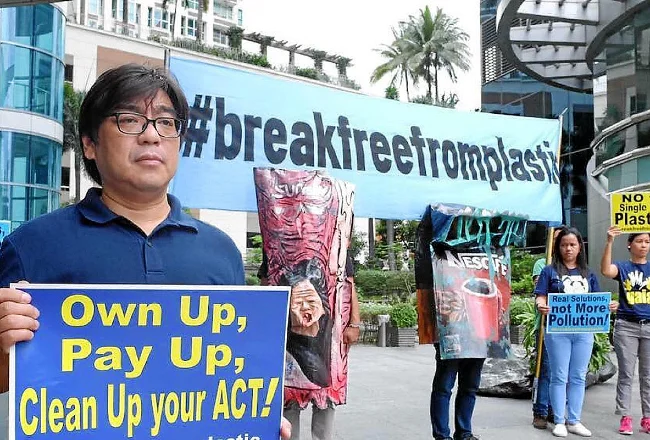
Alright, folks, we’ve reached the final section of our beverage extravaganza.
But before we reach the great depths of this article, I want to share a quote from Von Hernandez, global coordinator of Break Free From Plastic. Brace yourselves, because it’s a powerful one:
“Instead of allowing companies like Coke to greenwash their image, governments need to compel polluters to invest in reuse and alternative product delivery systems that avoid the problem in the first place.”
Boom! That’s one of the key systemic changes we need to avert the dire consequences of climate change and plastic pollution. Governments worldwide, listen up! It’s time to step up and address the plastic pollution crisis head-on by implementing a global plastic treaty.
Let’s cut the plastic pollution, hold corporations accountable, and embrace reuse-based alternatives. We have the opportunity to make a real difference, so let’s seize it!
Now, let’s talk about the strings attached to our consumption patterns. It’s no secret that consumers are constantly influenced by advertisements. And I know there’s always that genius in the comments section saying, “Well, no one is forcing you to buy a product just because you see an ad.”
Sure, technically that’s true. But let’s not ignore the massive impact ads have on our brains. Let’s not absolve those who put up the ads from their responsibility, either.
Here’s a mind-blowing fact for you: in the UK, junk food brands have spent a staggering 27 times more money on advertising their products than the government has on healthy eating campaigns. Let’s not pretend that doesn’t have an impact. It’s time to call out the unequal power dynamics at play.
But hold on tight, because we’re about to change gears. Let’s take a moment to talk about something entirely different. Brace yourselves for a detour into the realm of societal reflection and political systems.
Sounds thrilling, doesn’t it? I know, I’m such a tease! But seriously, how we distribute water, especially in our global society, speaks volumes about what capitalism values. It’s a fascinating and somewhat unsettling journey, so buckle up!
Lately, I’ve been noticing some water-related trends flooding social media. Flavored water, infused with fancy syrups, has become quite the sensation. Water talk has even become its own niche, discussing everything from different shapes and flavors of ice to designated storage systems.
And here’s the twist—these trends seem to reflect our current economic situation.
Money isn’t exactly having a stellar moment right now. Inflation is soaring, and the cost of living is skyrocketing. As a result, what we consider mainstream luxuries or small indulgences is changing. The trends in water and ice-related products resemble what we call the “lipstick effect.”
Wait, what’s the lipstick effect, you ask? I’m glad you’re curious! The lipstick effect describes a consumer behavior tendency observed during the Great Depression in the 1930s. Even though people had little money to spare, the cosmetic industry experienced a surge.
We saw a similar phenomenon during the 2008 crash, particularly in nail polish sales. It seems that when people have limited funds, they seek solace in small items that make them feel better. It’s a perfectly human response.
In times of economic uncertainty, treating yourself to a small indulgence can provide a glimmer of excitement. And that’s precisely what I believe we’re witnessing with water and ice-related products today. Social media has magnified these tendencies, making them more recognizable.
Speaking of water, let’s talk bottled water. It’s like its own little microcosm of capitalism.
More To Discover
- After Shutting Down 4 Plants, Tyson Foods Debuts Advanced, Automatic $300M Poultry Processing Facility
- Greenwash Update: Checking In On Coca-Cola and Starbucks’ Previous Environmental Claims
- FDA Finally Moves to Ban BVO, a Controversial Soda Ingredient (Complete List of Affected Sodas Included)
- NY Attorney General Sues Pepsi Over Alarming Plastic Pollution in Buffalo River, Endangering Public Health and The Environmental
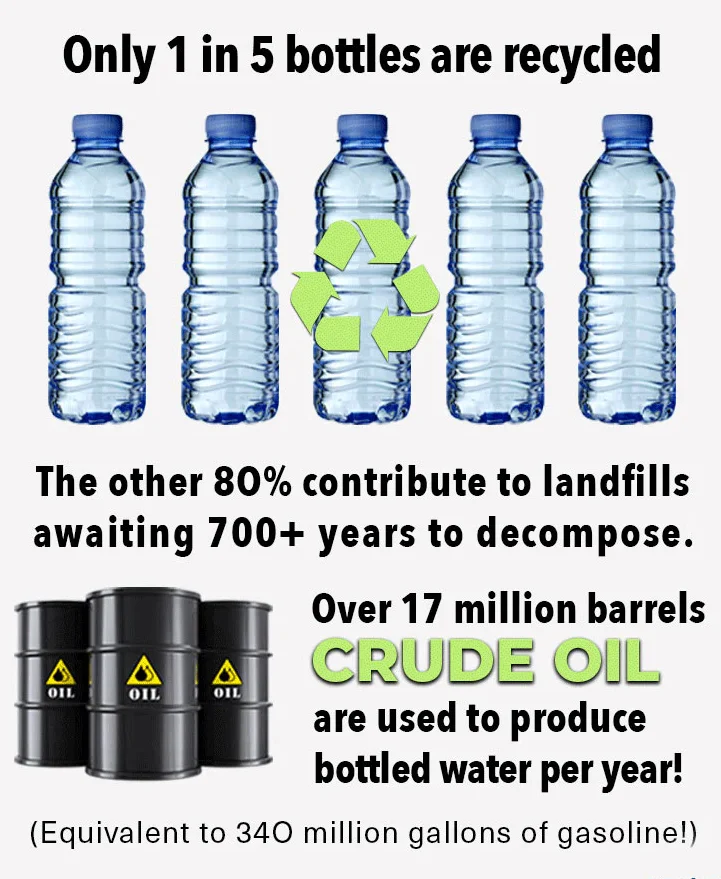
We all need water, right? And guess what? We have an abundance of it, or at least we would if our global water supply wasn’t continuously polluted by various industries.
But fear not! We have companies that swoop in, drain natural springs, bottle up that water, and sell it back to the very people who previously had access to it. It’s quite the business model, isn’t it?
Nestlé, in particular, has received its fair share of backlash for its questionable practices over the years. From the infamous baby formula scandal in the ’70s to their water-grabbing escapades, Nestlé has faced their fair share of criticism.
Let’s not forget when they extended a permit that had expired in 1988 to keep extracting water from natural reserves. They took our precious natural spring water, slapped a fancy label on it, and sold it back to us with a whopping 1,000% markup. Talk about being the villain of the century!
But wait, there’s more! PepsiCo and Coca-Cola also own water brands. It’s like a triumvirate of bottled water domination. And here’s the kicker—they all love to cozy up to governments and participate in certain narratives, like being an official sponsor for COP27.
Yet, they conveniently exclude themselves from other narratives that could hold them accountable for their actions. It’s like a twisted dance of power and priorities. Selling water, and other beverages for that matter, shouldn’t be a billion-dollar business.
Let me rephrase that: it shouldn’t be a business where billion-dollar corporations hoard the profits without redistributing any meaningful value back into the communities. It’s time for a reality check, folks!
Alright, now let’s shift gears once more and focus on how we can consume these products more sustainably.
The first thing I want to emphasize is this: don’t drink soft drinks when you’re thirsty. I know, it sounds counterintuitive, but hear me out. Soft drinks should be enjoyed as a special treat, not as a substitute for proper hydration. Quench your thirst with good old water. If you’re looking for something fun and different, indulge in a soft drink as an occasional treat. Let’s just keep our consumption in check, folks!
And here’s a pro-tip: always choose packaging that is recyclable in your area.
Recycling systems vary, so find out what can be recycled near you and opt for materials with the highest recycling rates. And let me make one thing clear: tap water is the ultimate superstar. I’m a tap water enthusiast, and I highly recommend it. Trust me, it’s the real deal!
Oh, and one last thing. Whenever possible, support small businesses instead of the big billion-dollar corporations. There are still plenty of family-owned businesses creating fantastic products. By supporting them, we reduce the likelihood of them being swallowed up by the corporate giants. It’s time to show those small businesses some love and make a stand against the villains of the industry.
Alright, folks, that concludes our wild beverage journey. Remember, consuming sustainably is not just a drop in the ocean—it’s a ripple that can create waves of change. So, grab your reusable bottle, fill it with tap water, and let’s toast to a greener, more conscious future.








